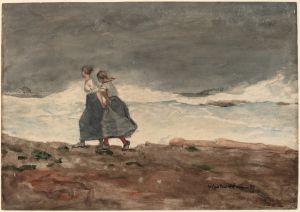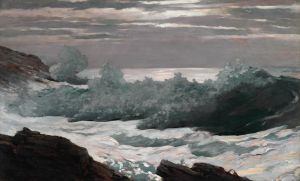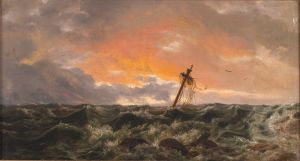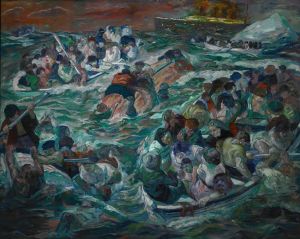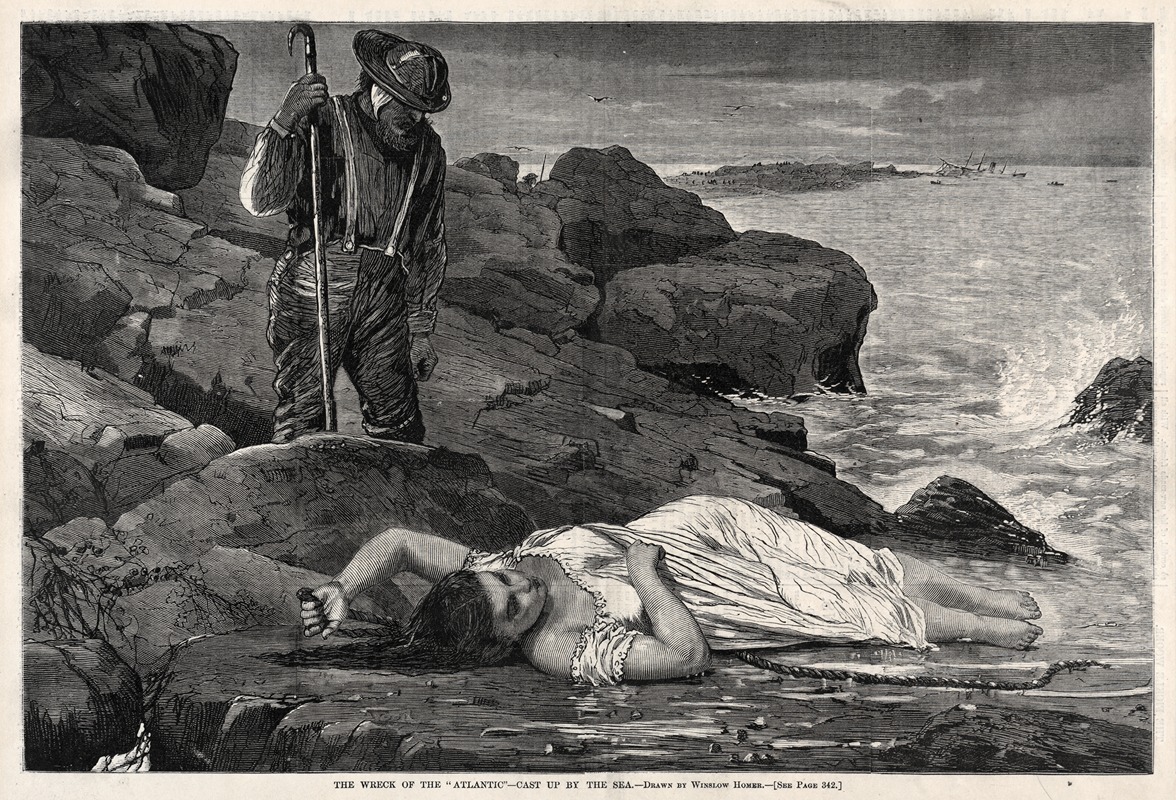
The Wreck of the ‘Atlantic’ – Cast Up by the Sea
A hand-painted replica of Winslow Homer’s masterpiece The Wreck of the ‘Atlantic’ – Cast Up by the Sea, meticulously crafted by professional artists to capture the true essence of the original. Each piece is created with museum-quality canvas and rare mineral pigments, carefully painted by experienced artists with delicate brushstrokes and rich, layered colors to perfectly recreate the texture of the original artwork. Unlike machine-printed reproductions, this hand-painted version brings the painting to life, infused with the artist’s emotions and skill in every stroke. Whether for personal collection or home decoration, it instantly elevates the artistic atmosphere of any space.
Winslow Homer, an influential American artist known for his marine subjects and depictions of American life, created the painting "The Wreck of the ‘Atlantic’ – Cast Up by the Sea" in 1877. This work is a poignant representation of the aftermath of a maritime disaster, capturing the somber mood and human tragedy associated with shipwrecks.
The painting was inspired by the real-life wreck of the SS Atlantic, a transatlantic passenger steamship owned by the White Star Line. On April 1, 1873, the Atlantic ran aground on the rocky shores of Nova Scotia, near Halifax, Canada, while en route from Liverpool to New York City. The disaster resulted in the loss of at least 535 lives, making it one of the deadliest maritime disasters of the 19th century.
Homer's painting does not depict the wreck itself but rather focuses on the human element of the tragedy. It shows the body of a young woman washed ashore, a stark reminder of the lives lost at sea. The composition is both dramatic and serene, with the figure lying peacefully on the sand, surrounded by the debris of the wreck. The artist's use of muted colors and the overcast sky further emphasize the somber mood of the scene.
The work reflects Homer's interest in the sea and its power, a theme that recurs throughout his career. He was known for his ability to capture the raw beauty and danger of the ocean, and this painting is no exception. The choice to focus on a single figure rather than the chaotic scene of the wreck itself allows viewers to connect on a personal level with the tragedy, evoking empathy and reflection.
"The Wreck of the ‘Atlantic’ – Cast Up by the Sea" is part of a series of works by Homer that explore the theme of shipwrecks and the sea. His fascination with maritime disasters was likely influenced by the growing public interest in such events during the 19th century, as well as his own experiences living near the coast in New England.
This painting is a testament to Homer's skill in conveying emotion and narrative through his art. It stands as a powerful reminder of the perils of sea travel during that era and the human cost of such disasters. Today, the painting is held in the collection of the Smithsonian American Art Museum, where it continues to be appreciated for its artistic merit and historical significance.
Homer's work remains influential, and "The Wreck of the ‘Atlantic’ – Cast Up by the Sea" is a notable example of his ability to blend realism with emotional depth, capturing the viewer's attention and prompting contemplation on the fragility of human life in the face of nature's might.







